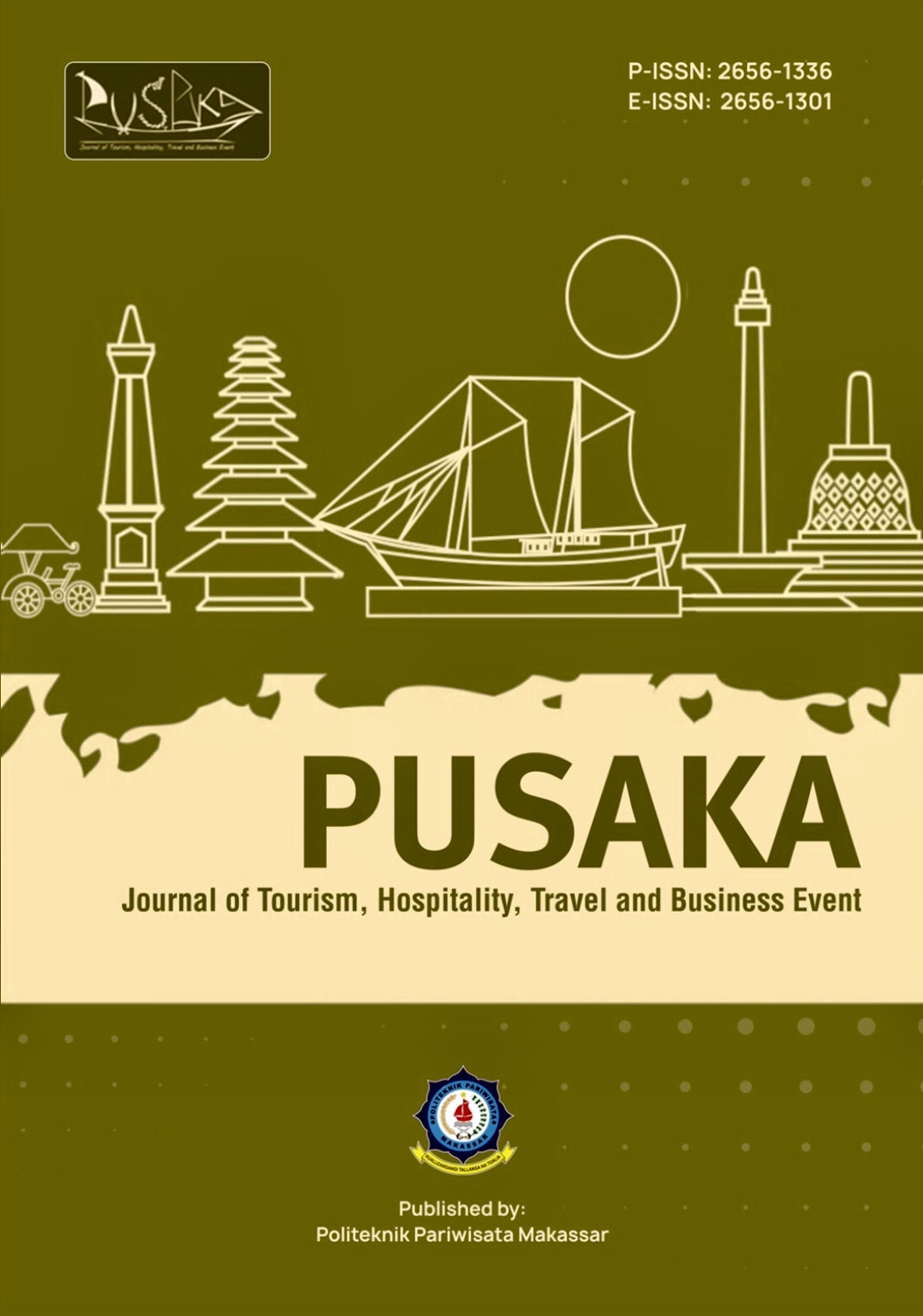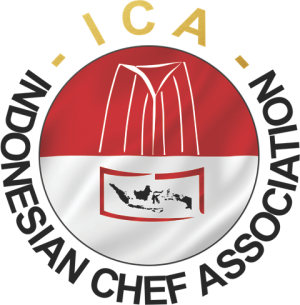Local Culinary Travel Pattern Development Model in Lerep Tourism Village
DOI:
https://doi.org/10.33649/pusaka.v5i1.123Keywords:
Culinary, Local, Travel, Storynomic, ModelAbstract
This study aims to create a model for the development of the Local Culinary Travel Pattern in mapping the tourist segment who likes traditional food types and preparations using the Storynomics Tourism approach as a determinant of steps to enjoy regional culinary specialties. The research method used is qualitative using in-depth interview techniques with village officials, visiting tourists and local communities in the Lerep Tourism Village, Semarang Regency with field observation activities and literature review. The results of this study can develop culinary tourism activities that are packaged with traditional culinary markets in Lerep Tourism Village using the development model of a local culinary travel pattern based on local wisdom which is transformed into a menu of traditional creations from the community in synergy with views for tourism actors and potential tourists to determine activities culinary tourism trips that focus on local food as a cultural characteristic of an area.
References
Araujo, E. B. 2016. Pengembangan Kuliner Lokal Sebagai Atraksi Wisata Minat Khusus di Dili, Timor Leste. Jurnal Master Pariwisata, Vol. 3 No. 1, 15-27.
Basoeki, A. 2014. Seminar Pola Perjalanan Indonesia. Bandung.
Besra, E. 2012. Potensi Wisata Kuliner Sebagai Daya Dukung Pariwisata di Kota Padang. Jurnal Riset Akuntansi dan Bisnis, Vol. 12, No. 1, 74-101.
Chhabra, D., Lee, W., Zhao, S., & Scott, K. 2013. Marketing of local food experiences: Authentication analysis of Indian cuisine abroad. Journal of Heritage Tourism, 8(2-3), 145-157.
Choe, J. and Kim, S. 2018. The effects of local food consumption value on attitude toward local food, food destination image, and behavioral intention. International Journal of Hospitality Management, Vol. 71 (April), pp. 1-18.
Getz, D., & Robinson, R. N. 2014. Foodies and food organizing on events. Scandinavian Journal of Hospitality and Tourism, 14(3), 315-330.
Green, E. 2013. A Study of Travelers' Foodie Activity Dimensions, Demographic
Characteristics, and Trip Behaviors. Unpublished Masters Thesis. East Carolina University, Greenville NC, U.S.A.
Hall dan Mitchel. 2011. Food Tourism Around the World: Development, Management, and Markets. Jakarta: Indo Salemba Empat.
Hall, C. M., & Gössling, S. (Eds.). (2012). Sustainable culinary systems: Local foods, innovation and tourism & hospitality. Routledge.
Handayani, Titin Hera Widi dan Marwanti. 2011. Modul Pengolahan Resep Masakan Indonesia, Kementerian Pendidikan Nasional, Universitas Negeri Yogyakarta.
Hadiwijoyo,Surya Sakti. 2012. Perencanaan Pariwisata Berbasis Masyarakat (Sebuah Pendekatan Konsep). Yogyakarta : Graha Ilmu.
Hadyanto, Sophia, 2012. Perencanaan dan Pengembangan Pariwisata. Jakarta: Sofmedia.
Levitt, J. A., Zhang, P., DiPietro, R. B., & Meng, F. (2019). Food tourist segmentation: Attitude, behavioral intentions and travel planning behavior based on food involvement and motivation. International Journal of Hospitality & Tourism Administration, 20 (2), 129–155.
McKee, Robets dan Thomas Gerace. 2018. Storynomics: Story Board Marketing in the Post-Advertising World. UK: Grand Central publishing.
Mak, A. H., Lumbers, M., Eves, A., & Chang, R. C. (2012). Factors influencing tourist food consumption. International Journal of Hospitality Management, 31(3), 928–936. DOI: https://doi.org/10.1016/j.ijhm.2011.10.012.
Moleong, Lexi J. (2012). Metodologi Penelitian Kualitatif. Bandung: PT. Renaja Rosdakarya.
Nuriata. (2014). Paket Wisata Penyusunan Produk dan Perhitungan Harga. Bandung: Alfabeta
Pujiyati dan Minta Harsana. (2011). Studi Potensi Wisata Kuliner Dalam Pengembangan Sektor Wisata Di Kota Semarang. Yogyakarta. (Jurnal).
Robinson, R. N., & Getz, D. (2014). Profiling potential food for tourists: an Australian study. British Food Journal, 116(4), 690-706.
Sugiyono, 2013. Metode Penelitian Kuantitatif, Kualitatif, dan R&D. Bandung: Alfabeta.
Zhang, H., Fu, X., Cai, L.A. and Lu, L. 2014. Destination image and tourist loyalty: a meta analysis. Tourism Management, Vol. 40 No. 1, pp. 213-2
Downloads
Published
How to Cite
Issue
Section
License

This work is licensed under a Creative Commons Attribution-ShareAlike 4.0 International License.






















